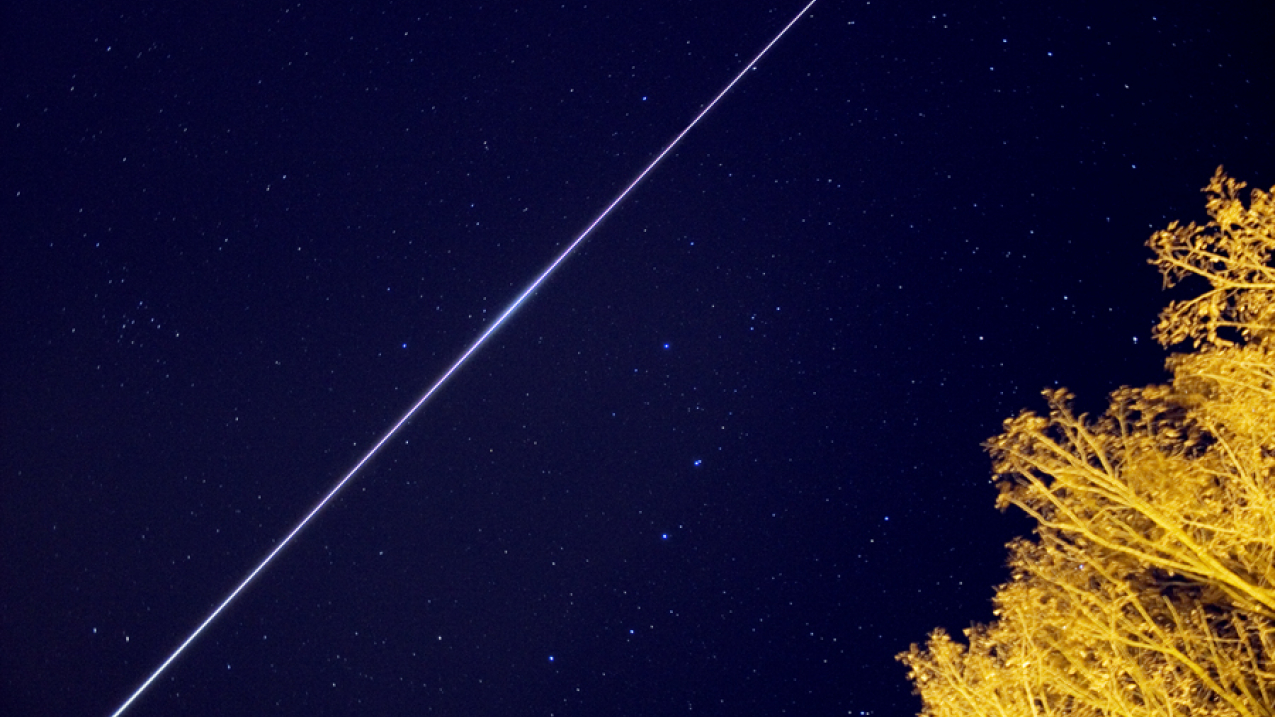Ever wonder if you can see NOAA satellites from Earth?
You can! But it can be very difficult.

This time lapse image, taken on January 10, 2008, shows the International Space Station crossing the night sky.
At their brightest, NOAA satellites have an apparent magnitude of +5.5, which is pretty faint.
The apparent magnitude of an object describes how bright it appears in the sky from Earth. The brighter an object appears to us, the lower its magnitude value. The sun, for example, has an apparent magnitude of -26.7, while the faintest stars seen in an urban neighborhood with the naked eye tend to have an apparent magnitude of +3 to +4. In fact, the average naked eye can only see objects up to around +6.5 apparent magnitude.
To make matters more difficult, satellites are relatively small and not very reflective compared with other things we see in space like the space shuttle, International Space Station and, of course, the moon and stars.
However, if you have a good viewing location away from large cities, where the Milky Way would be visible for instance, you can try to spot NOAA satellites. The GOES geostationary satellites are about 22,300 miles above Earth's equator and require a telescope to see, but you may be able to see a polar orbiting satellite (orbiting about 500 miles about Earth’s surface) with just a pair of binoculars or, if it’s dark enough, just your eyes!
Magnitudes: Now you see it, now you don't
| Apparent Magnitude | Celestial object |
|---|---|
| -26.7 | Sun |
| -12.6 | Full Moon |
| -4.4 | Venus (at brightest) |
| -3.0 | Mars (at brightest) |
| -1.6 | Sirius (at brightest) |
| +3.0 | Naked eye limit in an urban neighborhood |
| +5.5 | NOAA satellites (at their brightest) |
| +5.5 | Uranus (at brightest) |
| +6.5 | Naked eye limit |
| +9.5 | Faintest objects visible with binoculars |
| +13.7 | Pluto (at brightest) |
| +30.0 | Faintest objects observable by the Hubble Space Telescope |
You can use NASA Science's iSat: Interactive Satellite Viewer to track the location of NOAA's polar-orbiting satellites as well as many of the other satellites and objects orbiting the globe.
Love space? Learn more about NOAA's satellite missions.



